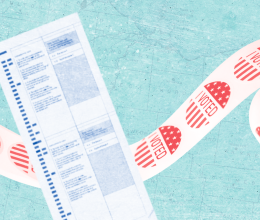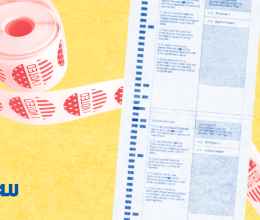WASHINGTON – In a 5-4 ruling in Husted v. APRI, the U.S. Supreme Court today upheld an Ohio voter purge practice that removes infrequent voters from the registration rolls. The decision creates a danger that other states will pursue extreme purging practices to disenfranchise millions of eligible voters across the country.
"Today's decision threatens the ability of voters to have their voices heard in our elections," said Stuart Naifeh, senior counsel at Demos, which led the legal team challenging the state's practices. "The fight does not stop here. If states take today's decision as a sign that they can be even more reckless and kick eligible voters off the rolls, we will fight back in the courts, the legislatures, and with our community partners across the country."
In APRI, Ohio asked the Supreme Court to overturn a federal appeals court decision that found an Ohio practice of targeting registrants who have not voted in a two-year period for removal from the voter rolls — when there is no evidence that the voter has become ineligible — violates a federal law known as the National Voter Registration Act (NVRA). The Court assented to Ohio's request, holding that the state's process does not violate the NVRA's prohibition on using non-voting as a basis for canceling registrations because, although the state indeed targets eligible voters who have not voted recently, the non-voting is not "the sole criterion" for removing a registrant.
"To have a healthy and functioning democracy, we must increase — not restrict — access to the ballot," said Andre Washington, president, Ohio A. Philip Randolph Institute (APRI). "Practices, like Ohio's, that remove eligible but infrequent voters from the registration rolls disproportionately disenfranchise low-income voters and voters of color."
In 2015 alone, hundreds of thousands of infrequent voters were purged from Ohio’s voter rolls. Over 40,600 registrants in the state’s largest county, Cuyahoga, were removed under the process allowed by the Supreme Court today. The majority of these registrants lived in low-income communities and communities of color.
"The Supreme Court decision to allow Ohio to purge its citizens from the rolls is a setback for voting rights nationwide," said Paul Smith, vice president of Campaign Legal Center (CLC). "Our democracy weakens when states are permitted to take actions that discourage voter participation. By constructing obstacles that make voting more difficult, Ohio is sending the wrong message to its citizens."
"Countless voters, including homeless and housing-insecure Ohioans, have already been stripped of their rights as a result of Ohio's unjust and illogical purge process," said Chris Knestrick, executive director, Northeast Ohio Coalition for the Homeless (NEOCH). "By greenlighting Ohio's purge process, the court allowed states to shut out the voices of these voters."
Demos and the ACLU of Ohio first filed suit on behalf of Ohio APRI, NEOCH, and Ohio resident Larry Harmon in 2016, prevailing in the circuit court and securing relief that protected the right to vote for purged Ohio voters in November 2016 and every other election in the state to date.
"Today's decision is a blow, not just to Ohio voters, but to the democratic process. Giving the green light to Ohio's purge process could have a ripple effect across the entire country. Despite this setback, the court's decision will not hinder our current and future advocacy efforts. Marginalized populations remain extremely vulnerable to state-sanctioned voter suppression and disenfranchisement, and we will continue to fight to uphold the rights of eligible voters in the 2018 midterm elections, and beyond," said Freda Levenson, legal director at the ACLU of Ohio.
"Voters should not be purged from the rolls simply because they have exercised their right not to vote. This ruling is a setback for voting rights, but it is not a green light to engage in wholesale purges of eligible voters without notice." said Dale Ho, director of the ACLU's Voting Rights Project.
###
The decision can be read here.





